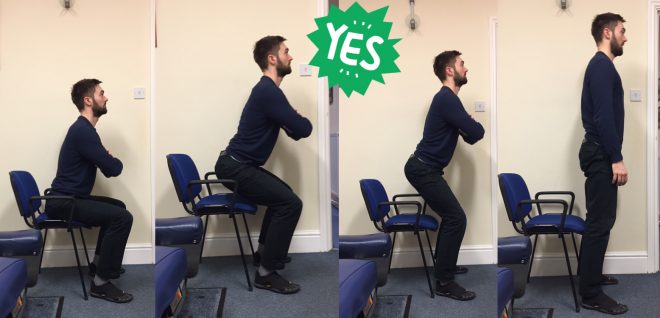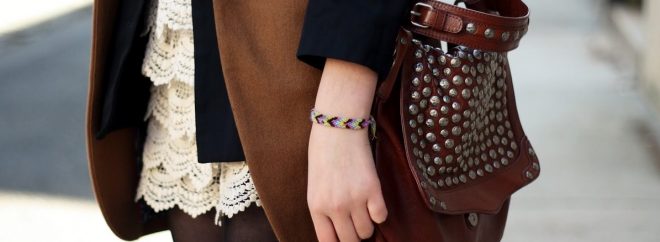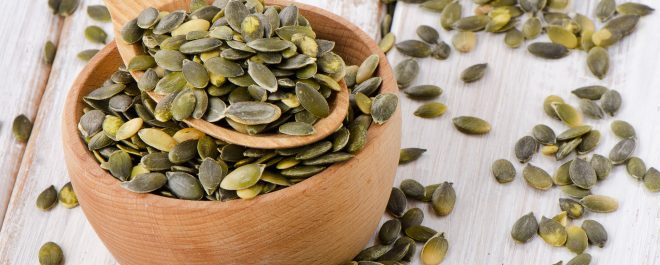
Christmas Opening Hours
We wish you all a Merry Christmas and a Happy, Healthy New Year!
We know from experience that the festive period can cause a variety of different issues, this months newsletter tries to help you address these but if you are struggling please remember that help is only a phone call away! (0115 9225085 or emergency mobile 07854 707 873)
Clinic opening hours over the festive period will be:
Normal opening until Midday Saturday 24th December (Christmas Eve)
Closed Monday 26th and Tuesday 27th December (Bank Holidays)
Wednesday 28th December 9am – 6pm Andrew Harlow.
Thursday 29th December 9am – 6pm Andrew Harlow & Alex Newton
Friday 30th December 8am – 5pm Alex Newton
Saturday 31st December 8am –Midday Andrew Harlow.
Closed Monday 2nd January 2017.
Normal opening hours resume Tuesday 3rd January.
Please note that both Christmas Eve and New Years Eve will offer EMERGENCY sit and wait appointments for patients who have called before 10am.

December Challenge
Over the winter months we find an increase in lower back pains associated to patients sitting around more. With this in mind we’d like to challenge you to get out of your chair properly (and more regularly!)
All to often we use our arms to push ourselves up and bend forward.
Our legs are much stronger and should be the driving force in standing up. Cross your arms to stop you using them and keep your back nice and straight. Try pulling your stomach in to engage your core muscles.
You could do a few repetitions as a gentle exercise, but importantly please get UP out of your chair/sofa every thirty minutes to get the body moving again.

Rocking Around the Radio
Our own Alex Newton visited BBC Radio Nottingham to discuss the best way to have a pain free Christmas. She was interviewed by Alan Clifford and you can listen to the interview by going to:
http://www.beestonchiropractic.co.uk/have-a-pain-free-christmas/

Top Tips to Avoid Back Pain at Christmas
As we approach the Christmas season, you might be more worried about piling on the pounds and feeling like a Christmas Pudding on the big day than anything else, but you’d be surprised how many people hurt their back over the festive period!
Did you know… There is an increase in patients coming in to the clinic with backaches and pains that have appeared during the Christmas period.
In fact… There are many ways you can hurt your back at Christmas. Bending and lifting heavy items like Christmas trees, furniture or even the turkey can easily strain your back or exacerbate existing aches and pains.
If you do hurt your back or neck during the holidays, your first thought might be to put your feet up on the sofa and watch some festive films and wait till the pain disappears.
But remember… Although this may seem like the obvious option, it is much more beneficial for your back to keep your muscles moving.
Here are our top tips to avoid back pain at Christmas:
If you’re lifting heavy or awkward objects like the Christmas tree or furniture, always ask for help and make sure you also bend your knees when lifting heavier items!
When you’re putting up decorations, use a stepladder to avoid over stretching or straining your back or neck.
Make sure you go for regular walks over the holidays, and if you don’t have time, make sure you’re supporting your back at all times with a small cushion.

Could your wardrobe be causing you back pain?
From pencil skirts to skinny jeans, there are a range of everyday outfits that can be the cause for bad necks, painful backs and aching knees.
High heels
Wearing high heels more regularly than not can be bad for your feet and back. Hammer toes, bunions, shortened calf muscles; the list of ailments caused by wearing shoes with too high heels goes on, including circulation problems, knee damage and back pain. Eliminate damage by reducing the amount you wear high heels. Opting to wear trainers while walking long distances, such as to and from work, will help matters, as well as sticking to a small heel as much as possible.
Oversized bags
You may already be aware of the danger of lugging a heavy bag over one shoulder but did you know that carrying it in the crook of your forearm could be even worse? This one-sided lift can increase the risk of muscle strain and pain in the neck, shoulders and upper back and even trigger tension headaches. Top tips? Don’t overfill your bag, hold it by the handle or, if you must wear it over one shoulder, change sides regularly.
Skinny jeans
Wearing jeans that grip around the waist, hips, thighs and calves can reduce your mobility, even if it’s just walking that you're doing. Restrictive clothing can lead to a loss of ‘bounce’ in your stride and the natural shock-absorbing qualities in your walk, causing pressure in your joints.
Pencil skirts
Tight trousers and pencil skirts can damage muscles and joints as much as high heels and heavy bags, leaving you in pain. Their straight-sided, slim fit clamps your knees together, making it harder to balance and bend. Wearing a tight skirt regularly could lead to a pulled muscle or even disc problems because of the limitations they put on your ability to move.
Heavy necklaces
Our necks have to struggle to cope with the strain of the weight of an average head (around 10lb to 12lb – roughly equivalent to five bags of sugar) day in day out, so adding a heavy necklace can really heighten the pressure. Not only this, wearing a heavy necklace also pulls the neck forward or backwards, away from its point of neutral balance. This can lead to neck tension and pain, and long-term could encourage a slouched posture and damage to the back.
Supportive Underwear
While wearing supportive underwear can have beneficial effects on your posture, as it acts like the compression clothing top athletes wear to improve performance by increasing blood and lymphatic flow, choosing the wrong variety will cause trouble. Wedging yourself into something too tight, which contains low amounts of flexible lycra will not only restrict breathing but, if it’s tight enough, also limit the movement in the middle of your body, placing abnormal loads on parts of your spine. Restricting movement to sections of your spine means that other parts have to compensate. This usually leads to pain and, ultimately, damage in your upper or lower back.

Take care of your posture while driving
You might be planning road trips to visit friends and family over Christmas, but be aware that you may be setting yourself up for future spinal problems.
With back pain being the number 2 reason why we visit our GPs and costing the NHS £1.3Million per day, it is not surprising to see that over 60% of drivers in this survey agreed with the statement ‘my car seat can make my back ache worse after a long trip’ and maybe more importantly, over 40% of drivers said that the car seat was the main cause of their backache.
According to a recent survey commissioned by AutoExpress magazine, a poor seating position in your car can lead to both back in neck problems while a slouched position can also compromise your safety.
A slouched position can alter the way you wear the seat belt, reducing its effectiveness while an uncomfortable car seat can also lead to driver distraction and loss of concentration.
So how should your car seat be set up to protect your back and neck?
Top tips:
1. Make sure that your car seat is not too far away from the pedals. When you fully depress the clutch your legs should remain slightly bent.
2. Make sure that your backrest is not tilted back too far. Your elbows should be slightly bent when you position your hands correctly on the steering wheel in the ‘10 to 2 position’.
3. Make sure that you increase the lumbar support as much as possible to support the natural arch in your back to avoid slouching. If you do not have a lumbar support built-in, you can use a portable, dedicated lumbar support cushion or roll up a towel and put it behind your back.
4. Make sure that the top of your headrest is above the top of your ears. If it is too low it can increase the risk of neck injuries in case of an accident.
5. Now, stretch yourself up and make your spine as tall as possible sitting in an ideal posture. Set the rearview mirror so you can just about see the traffic behind you. This will help to correct your posture every time you look in your rearview mirror, because if you slouch you will not be able to use the rearview mirror.
6. Make sure that your seatbelt is correctly positioned. If possible, adjust the height so it is not sitting on your neck and according to the Royal Society for Prevention of Accidents (RoSPA), the belt should be worn as tight as possible, with no slack and the lap belt should go over the pelvic region, not the stomach.
7. Why not call in to the clinic and speak to a chiropractor if you are concerned about your spinal health and get your car seat checked as part of our service.

Foods can help relieve pain
The primary factors that can cause or worsen pain include poor posture, injury, too little (or too much) activity, and specific conditions such as arthritis. However, what you eat can also help to manage or relieve pain, or even prevent it injury in the first place.
Here are some of our top nutrition tips for managing pain.
Ditch the processed foods
Processed foods generally refers to most things that come in a packet with a list of ingredients: from biscuits to ready meals to breakfast cereals. They often contain little in the way of naturally occurring vitamins and minerals. They may worsen inflammation and pain because they contain higher levels of unhealthy fats – in particular, processed omega-6 fats and ‘trans’ fats, which have pro-inflammatory properties. They often contain quickly absorbed sugars or refined carbohydrates too, which may exacerbate inflammation when consumed in excess.
In contrast, ‘real’ foods are as close as possible to how they are found in nature. They can include whole vegetables and fruit, nuts and seeds, whole grains, fish, eggs and meat (whole cuts, not ‘deli’ or processed meats). These foods naturally contain higher levels of nutrients that can help reduce inflammation and pain, such as those we’re going to look at in more detail below.
Eat magnesium-rich foods
One of the nutrients that may help to manage pain and inflammation is magnesium. Magnesium helps our muscles to work normally, including helping them to relax, which in turn helps to avoid or relieve muscle tension that can contribute to pain. This mineral is also important for the nerves.
Magnesium is found primarily in whole unprocessed plant foods – especially green leafy vegetables such as spinach and kale, seeds and nuts, and whole grains including rye and buckwheat.
Include oily fish
Oily fish such as mackerel, salmon, sardines, herring and anchovies are high in omega-3 fats. These fats have anti-inflammatory properties and therefore may help to manage pain. The specific omega-3s in fish (EPA and DHA) can be more beneficial than the types of omega-3 found in seeds such as flax seeds.
Aim to eat a serving of oily fish around three times a week. These can include tinned sardines and salmon as long as they do not contain added vegetable oils (olive oil is fine). Note that ‘omega-3 fish fingers’ are not a good source of omega-3 fats – stick to the real thing!
Get plenty of vitamin C
You may know vitamin C for its role in the immune system. But in fact the primary role of vitamin C is in making collagen – a protein that forms the basic structure of most of the body’s tissues, including the bones, joints and muscles. If your body can’t make collagen properly, these tissues will lose strength and function, contributing to not only day-to-day pain but also potentially painful conditions such as arthritis and osteoporosis.
Eating a variety of vegetables and fruit is the best way to get enough vitamin C. Although ‘five-a-day’ is the well-known recommendation, we should be aiming for at least seven portions a day, primarily of vegetables, in order to get good amounts of vitamin C and antioxidants. Some of the best sources of vitamin C include peppers, kale, broccoli, kiwi fruits, Brussels sprouts, watercress and red cabbage. If you can, get your veg and fruit from a local producer (e.g. a farmer’s market) as it can lose its vitamin C when it’s stored or transported for long periods of time.
Include anti-inflammatory spices
The spices ginger and turmeric in particular can have anti-inflammatory and pain-relieving properties. Use fresh ginger and powdered turmeric in your cooking whenever you can, make fresh ginger tea with a grated thumb-sized piece of ginger. If you have a good vegetable juicer you can even make fresh ginger juice to sip on – but watch out, it’s strong!
Try avoiding nightshades
The ‘nightshade’ or solanaceae vegetables may worsen inflammation and pain for some people. These are aubergines, tomatoes, potatoes (not sweet potatoes), and peppers – including chillis and all types of chilli powder (cayenne, paprika etc.). If you’ve implemented the other changes for at least three months and not noticed a significant improvement in your pain, then try eliminating the nightshade vegetables.
Consider eliminating gluten
Gluten is a protein that’s found primarily in wheat, barley and rye. The most severe reaction to gluten is coeliac disease, where the sufferer has to avoid gluten for the rest of their life. But some people who do not have coeliac disease may also react to gluten in a less severe way, which can contribute to inflammation in the body. If you’re cutting out gluten it can be best to work with a nutrition practitioner (e.g. a nutritional therapist) for support to make sure you’re not missing out on any nutrients.
For further information or comments, please contact at on or email at
We treat all conditions that affect any muscle or joint in your body, from your head to your little toe! One of the most common complaints that we treat is back pain and Chiropractic is recommended by the government authority, the National Institute for Clinical Excellence (NICE) for acute and chronic back pain. Some of the other conditions that we treat are neck and headache, shoulder pain, leg and hip pain, knee and foot pain, sciatica and arthritis. Our registered Chiropractors all have at least five years of training. Treatment costs can be covered through most health insurers. If you are in any doubt, we are always very happy to talk with you on the phone to see if your condition will respond well to Chiropractic treatment. Call the clinic now to arrange an appointment time that works for you. 0115 9225085 If you would like to opt-out of receiving these newsletters please follow the unsubscribe link below, email alex@beestonchiropractic.co.uk or let us know at your next appointment.







